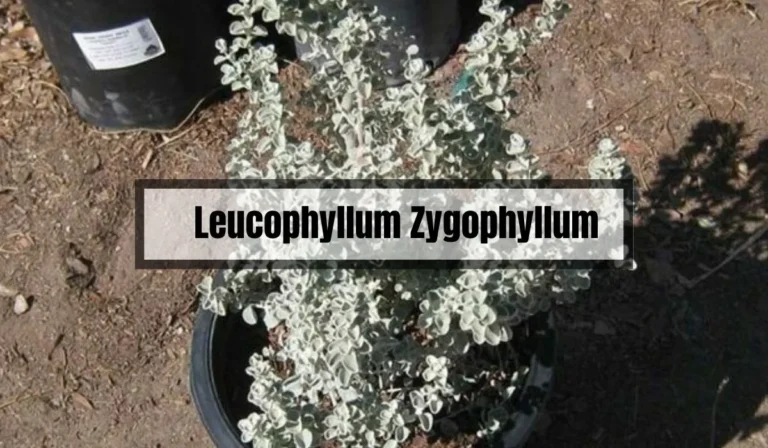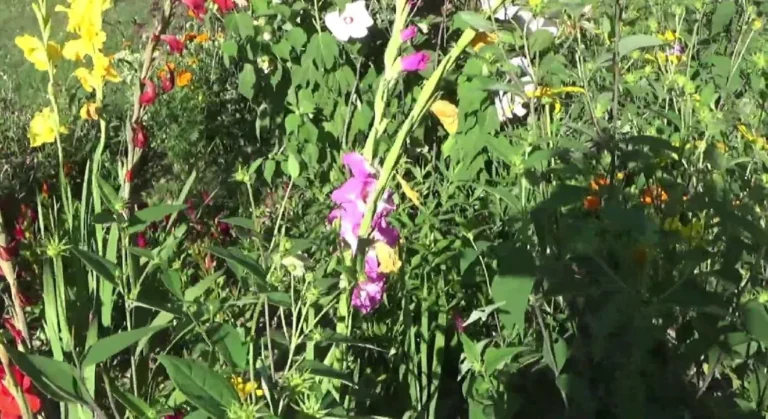Elevate Your Home Decor with 10 Gorgeous Tall Succulents: A Compressive Guide
From Louise: Passionate about gardening, I specialize in plant care and flower knowledge. I’m here to share my expertise and assist with your gardening queries. Feel free to ask any questions or seek advice on lawn care—I’ll respond within 24 hours!
If you’re looking to add some greenery to your home, but don’t have the space for a large plant, consider a tall succulent. These plants can grow up to several feet tall, making them a great choice for elevating your home decor.
Not only are they beautiful, but they also require very little maintenance since they are drought-tolerant. There are a variety of tall succulent varieties to choose from, each with their own unique characteristics.
From the Old Man Cactus to the African Milk Tree, there is sure to be a succulent that catches your eye. These plants come in a range of colors, from bright greens to silvery blues, making them a versatile addition to any room. Plus, they are great houseplants since they don’t require much water and can tolerate a range of lighting conditions.
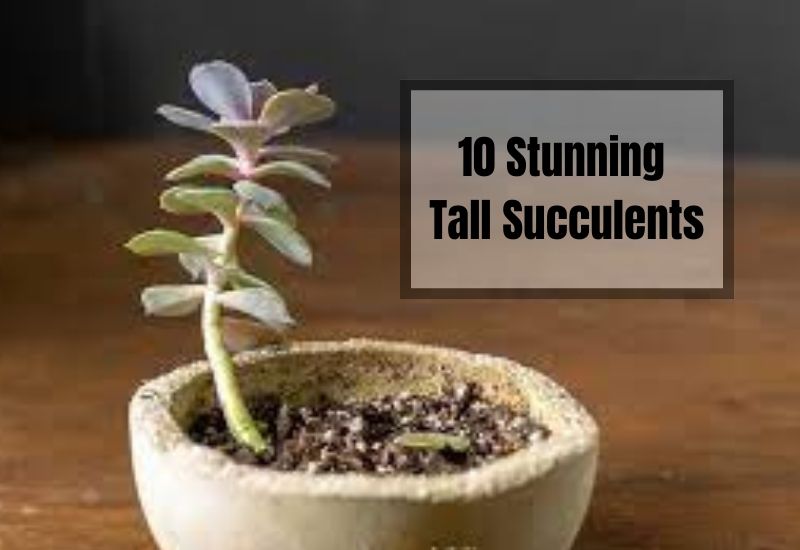
Benefits of Tall Succulents
Tall succulents can add a unique touch to any room and provide several benefits when incorporated into your decor. One of the most significant advantages of using tall succulents in home decor is their ability to add height to a room. This is especially helpful when trying to balance out other lower-growing plants or when decorating a larger space.
In addition to adding height, tall succulents also bring interest to a room. These plants come in a variety of shapes and sizes, and many have unique textures and patterns on their leaves. As a result, they can make a statement and serve as a focal point in your decor.
Another advantage of using tall succulents in your decor is that they are low-maintenance plants. Succulents are known for their ability to store water in their leaves, which makes them very drought-tolerant. This means they require minimal watering and are easy to care for, even if you don’t have a green thumb.
Finally, tall succulents come in a range of colors, from shades of green to pink and purple hues. This provides plenty of options to coordinate with your existing decor or create a new color scheme for your room.
Overall, tall succulents are a versatile and unique addition to any home decor. They offer several benefits, including adding height and interest, being low maintenance, and coming in a range of colors and textures.
10 Tall Succulents
- Golden Barrel Cactus (Echinocactus grusonii)
- Fishhook Barrel Cactus (Ferocactus wislizeni)
- Palmer’s Agave (Agave Palmeri)
- Ocotillo (Fouquieria splendens)
- Queen of the Night/ Hedge Cactus (Epiphyllum oxypetalum)
- Saguaro (Carnegiea gigantea)
- Old Man Cactus/ Whisker Cactus or Senita (Pachycereus schottii)
- Arizona Fishhook Cactus
- Hedge Hog Cactus
- Burbank’s Spinal Cactus/ Burbank Prickly Pear
1. Golden Barrel Cactus (Echinocactus grusonii)
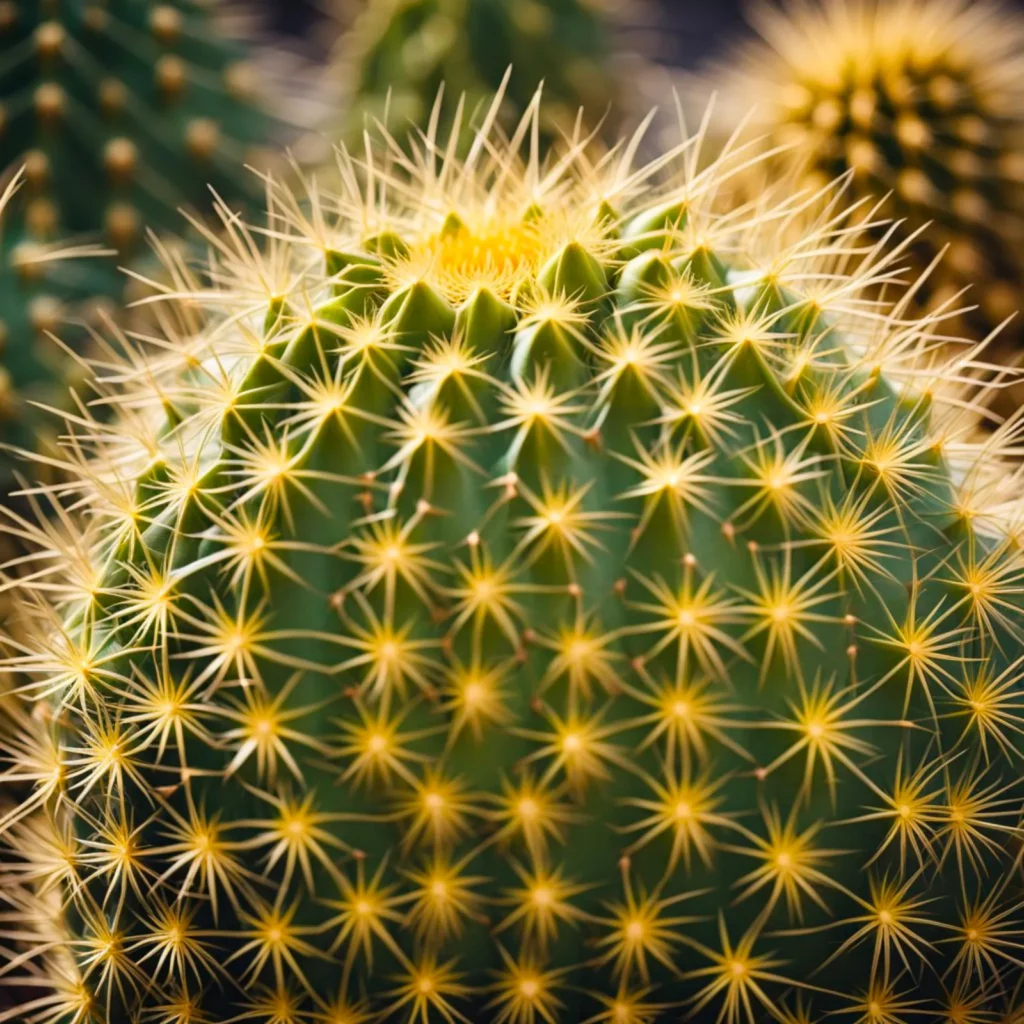
Let’s kick this list off with the Golden Barrel Cactus, also known as ‘Mother-in-law’s cushion’. This Mexican succulent looks just as beautiful as it sounds! Its green body surrounded by the golden-yellow spine is hard to miss.
Another stunning feature is its crown; the top of its stem or the crown is covered by light-coloured hair, which looks rather fascinating, especially in more developed plants. The Golden Barrel has rapidly gained popularity for being one of the top choices for home landscaping.
These plants are bought when they are at a decent size. They grow rather slowly but reach a pretty large size once they are fully grown. They can easily be incorporated into your garden’s landscape or around your house in containers. This plant is also incredibly easy to nurture and doesn’t require special care.
You may want to stay clear of these plants if you have animals or children around because of its spine. However, you can use this plant to increase security. Unfortunately, the Golden Barrel Cactus is also an endangered species in Mexico, where it originates from.
Go ahead and find out how to grow a Golden Barrel cactus!
2. Fishhook Barrel Cactus (Ferocactus wislizeni)
These succulents may end up growing taller than you anticipate! The Fishhook Barrel Cactus, commonly known as ‘Compass Barrel’, originates from Southwestern New Mexico, Arizona, and Western Texas. Its name comes from the long spines that resemble fishhooks.
The Fishhook Barrel Cactus is highly tolerant of extreme temperatures. The Compass Barrel is rather easy to propagate around the Tuscon area. This plant is generally propagated by its seed.
This plant is an excellent option for decorating your house and will also make a great addition to your garden display. You can see attractive flowers and fruits growing on top of this plant.
You don’t need to spend too much time caring for this plant as it not very high-maintenance. This plant generally grows about two to four feet in diameter. They are capable of reaching almost ten feet in some plants with a three-foot diameter.
Find out tips on how to propagate your succulent!
3. Palmer’s Agave (Agave Palmeri)
Being one of the largest members, Palmer’s Century plant or Palmer’s Agave is one of the more well-known plants in its family. Originating from New Mexico and Arizona, the Agave Palmeri is a slow-growing plant which is incredibly simple to nurture. This plant has been used as a source of food and mescal for several years.
Palmer’s Agave can grow about four feet tall and generally about five feet wide. The stem of this plant can grow almost sixteen feet high. It is capable of withstanding the extreme cold and can thrive in environments as low as 10 degrees. However, it requires more humus in its soil than other succulents.
You can conveniently propagate these plants either by rhizomes offsets or seeds. Like other succulents, Palmer’s Agave too does not require much special care. All you need to do with this plant is water it occasionally.
You can place it in a location and let its presence slip your mind! Please remember to take precautions while handling this plant as it produces an irksome sap and has prickly thorns.
4. Ocotillo (Fouquieria splendens)
Ocotillo is native to southern California and western Texas. It is highly tolerant of droughts and can sustain many harsh environmental conditions.
Interestingly, the name ‘Ocotillo’ came from the hot orange flowers that this plant offers! You will see them bloom between February and April. You will also see 6-100 unique wand-shaped branches that originate from the root crown.
The growth process of this plant is relatively slower than the others. This plant is popularly used for fencing as it is capable of reaching about 20 feet tall. The stems produce narrow oval leaves when the monsoon arrives. These leaves remain intact until the soil fully dries up.
It would be best if you provided enough support for your Ocotillo by planting it deep enough. Using a garden hose to keep the long stems moist until you ensure it is well-rooted into the soil is also essential for its good health. You can keep this plant out of the soil for many days but can still be transplanted effectively.
Another fun fact about this plant: The lifespan of Ocotillo can range from 60 years up to a 100!
Click here to read more about Ocotillo in detail!
5. Queen of the Night/ Hedge Cactus (Epiphyllum oxypetalum)
The Hedge cactus or ‘Queen of the Night’ is native to South America as well as Mexico. The Hedge cactus is abundantly seen in rainforests or growing on top of trees. When it comes to this plant, its beautiful white flowers are a real showstopper! You will see one pretty flower blossom every night.
This Epiphyllum typically grows about three feet tall and is generally grown in gardens or close to windows. It features long columnar stems with about 5-7 ribs on them. The color of its stems can range from bluish shades to dull grey colors. It also produces short, dark-colored spines.
You will see the Hedge cactus in many gardens as it has been enculturated for several years. It can easily be found and grown as it is a highly adaptable plant. You can conveniently propagate this plant either by stem cuttings or by seeds.
6. Saguaro (Carnegiea gigantea)
The state flower of Arizona, the Saguaro is one hell of a cactus because of its size! It has a thick, columnar stem with many large branches that turn upwards, resembling a typical Southwestern cactus.
This slow-growing cactus is capable of growing almost 60 feet tall once they start maturing in the wild. It thrives well in the bright sun. However, Saguaro can potentially burn up if exposed to the sun for continuously for an extended time. Hence, pick a spot that receives enough bright light and some partial shade for the summer.
Being a desert cactus, Saguaro enjoys some neutral, efficiently-draining soil. You can add some pebbles or gravel on top of the soil. Doing this will facilitate the cactus to grow taller and will reduce the moisture in the soil as well.
You will be surprised to know that the lifespan of Saguaros can range from 150 years to 200 years!
Check out this guide to grow and care for Saguaro cacti!
7. Old Man Cactus/ Whisker Cactus or Senita (Pachycereus schottii)
Like Hedge cactus, Senita or ‘Old Man Cactus’ also features stems ranging from shades of blue to dull grey colours. These stems create a distinct bristle-like appearance on top of the plant. You can see stunning nocturnal white flowers with pink shades around each petal from the top portion of the plant.
Growing a Senita is rather simple. However, you need to ensure that you do not expose it to freezing conditions as it is super sensitive to it. Senita generally grows about 15 feet tall and 10 feet in width.
The Old Man cactus is exceptionally tolerant of high temperatures and dry conditions. You will want to give it a little more attention if you incorporate it into your garden landscape. You can also plant these in containers or decorate them on walls.
8. Hedgehog Cactus
The Hedgehog cactus is abundantly seen in dry and arid environmental conditions. This cluster-like plant grows about 18 inches tall and 24 inches in width. It is tough to miss this plant because of its distinct deep brown spine that lies near the top of the stem.
If you are looking for the perfect option for a dry garden, the hedgehog cactus is for you! You can easily propagate this plant either by offset cuttings or by seed. You will hardly stress taking care of it because it’s just that easy!
Click on this link to find out more about hedgehog cacti!
9. Arizona Fishhook Cactus
As you can tell from its name, this Fishhook cactus is predominantly seen in various parts of Arizona. It is popularly known for its short, slender, black-hooked spines and its striking flowers ranging from pink to dark magenta colours.
The Arizona Fishhook cactus also offers edible fruits. These fruits will not fail to catch your eye due to their resemblance to red chilis. Overall, these plants are an excellent choice for any sunny spot, either on a patio or the garden.
If you are dreading being plant parent, you do not have to worry with this one! This plant hardly requires any attention as it a very low-maintenance plant. All you need to take care of is its container situation.
10. Burbank’s Spineless Cactus/ Burbank’s Prickly Pear
Burbank’s Spineless cactus is commonly seen around the cities on the Southern side of America. This plant has been available in various parts of Asia as a result of continuous cultivation over several years.
As the name suggests, the Prickly Pear is a spineless plant that features large, flattened leaves that are generally about 12-20 inches long. The Burbank’s Spineless cactus is a rather large plant. You will see it attain its massive size through its trunk or a centre point for growth.
It is not very high-maintenance and requires little care. It is extremely simple to grow these plants from cuttings and you will not need to purchase a special type of soil for them. The Burbank’s Spineless cactus thrives in both bright sun and partial shade. You will not have to wait too long for it mature either.
Here’s where you can find out more about the spineless cactus!
Tips for Caring for Tall Succulents
Here are some tips for caring for tall succulents:
- Light requirements: Succulents need bright, indirect sunlight to thrive. Tall succulents should be placed in a spot where they receive plenty of light, but not direct sunlight as it can burn the leaves. If you notice that the leaves are turning yellow or brown, it could be a sign that they are getting too much light.
- Watering: Succulents do not need frequent watering. In fact, overwatering is one of the most common reasons for their demise. Water your tall succulents only when the soil is completely dry. When watering, pour water directly into the soil and avoid getting water on the leaves. Over time, you’ll learn the watering schedule that works best for your specific succulent.
- Soil: Succulents need well-draining soil that allows excess water to flow away from the roots. Use a potting mix that is specifically designed for succulents or make your own by mixing sand, perlite, and peat moss.
- Fertilizer: Succulents do not require a lot of fertilizer. A light application of a balanced fertilizer once a month during the growing season (spring and summer) is sufficient. Avoid fertilizing during the dormant season (fall and winter).
- Supporting tall succulents: Some tall succulents can grow top-heavy and become unstable in their pot. You can support them by staking them up or by placing a small rock or pebble on the soil around the base of the stem to help keep it upright. You can also repot the succulent into a larger pot with a wider base for more stability.
By following these tips, you can help your tall succulents thrive and enhance the beauty of your home decor.
Incorporating Tall Succulents into Your Home Decor
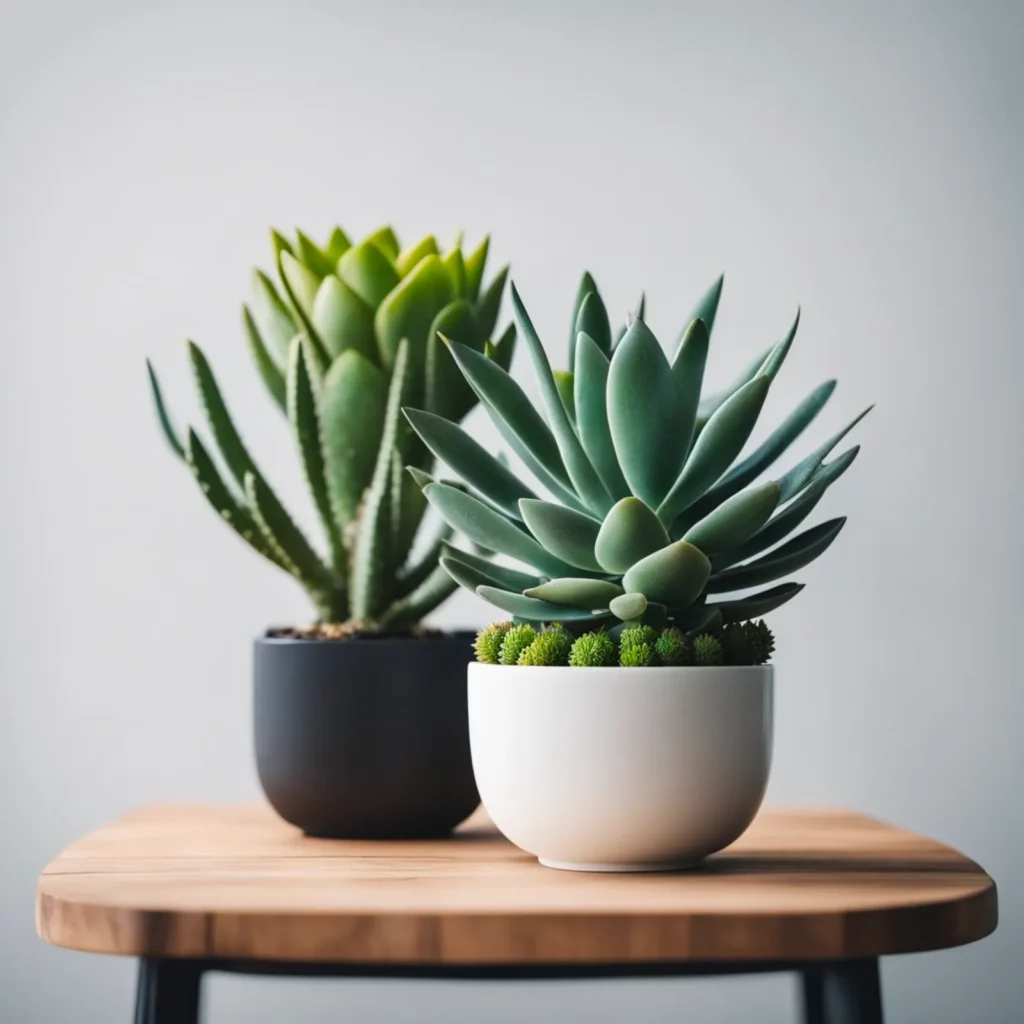
If you’re looking to elevate your home decor, incorporating tall succulents is a great way to do it. Not only are they visually stunning, but they also require minimal maintenance, making them a perfect addition to any space.
When it comes to choosing the right succulent variety, consider the lighting and temperature of your home. Some popular tall succulent varieties include the African Milk Tree, Snake Plant, and Ocotillo, all of which can thrive in a variety of settings.
Once you’ve selected your succulent, think about how you want to display it. A tall succulent can make a great statement piece on its own, or it can be grouped with other houseplants to create a lush, layered look. Consider placing your succulent in a decorative pot or planter to add an extra touch of style.
When it comes to placement, tall succulents can work well in a variety of spaces. They can be used to add height to a room, or they can be placed in a corner to create a focal point. They also work well in entryways, where they can make a great first impression on guests.
Finally, keep in mind that succulents are versatile and can be incorporated into a variety of decor styles. Whether you prefer a modern, minimalist look or a more bohemian vibe, there’s a succulent variety and display option that will work for you.
Summary
We trust that our article showcasing 10 varieties of tall succulents has provided you with insight into the diverse range of forms found in the succulent world. Incorporating different types of succulents into your living or decorative spaces is an excellent way to add flair. Additionally, tall succulents are an exceptional choice for enhancing any plant display.
Remember that tall succulents require sufficient light to thrive. If you’re planning on growing one indoors, it’s important to select a bright and sunny location. Also, keep in mind that succulents are sensitive to changes in day length, especially during winter months when days are shorter.
Furthermore, if you desire a specific length for your succulent, you can prune or cut it accordingly. This method is also useful for propagating and expanding your succulent collection!

